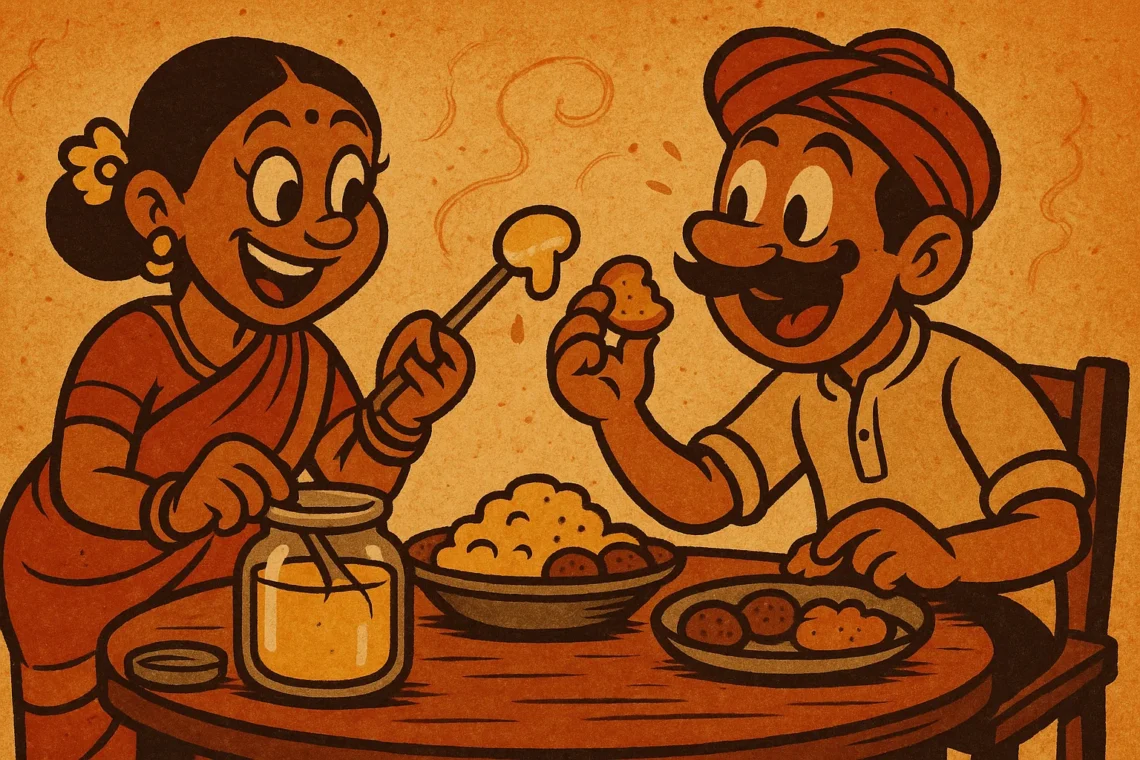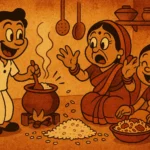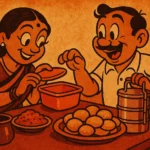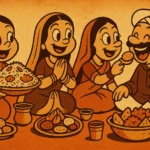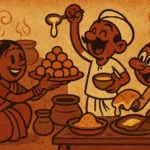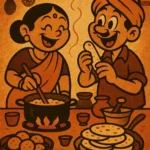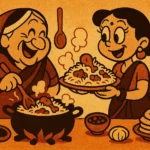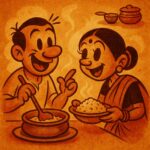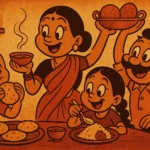It was a plain glass jar. The kind that once held instant coffee, now repurposed like all good jars in Indian kitchens. There was no label, no date, no fancy lid — just a layer of thick, golden ghee glowing quietly on the shelf beside the masalas. It looked like any other jar in my mother’s kitchen, until one day she placed it on the table with my dal-chawal and said, “This one’s special. Made it the way your grandmother used to.” And just like that, the meal stopped being about taste — and started being about memory.
I’d never really thought about ghee as a story. It was just there. A spoonful on rice. A slick layer on rotis. Something that made bitter greens tolerable and khichdi feel like home. But that day, as she told me about the way her mother churned butter by hand, boiled it slow, strained it through an old cotton sari, and let it rest overnight in a brass pot — the jar transformed. It wasn’t ghee anymore. It was history. In a container. On our table.
Not All Recipes Are Written Down
Apparently, my grandmother’s ghee had a specific scent — nuttier, deeper, slightly smoky from the wood-fired stove. My mom said she hadn’t tasted anything like it in years. “The store-bought stuff doesn’t come close,” she said. “And even when I make it at home now, it’s never exactly the same. But I tried this time. Used cream from three weeks of milk, just like she did. No shortcuts.”
As she spoke, I noticed her stirring it into the dal more slowly than usual, letting it swirl, letting it settle. There was something quiet about the gesture — not reverent, not dramatic, just deeply familiar. Like someone revisiting a room they hadn’t been in for a long time. Like memory rising through steam.
The Ghee Jar as Archive
Most stories in our house weren’t told in words. They lived in food. In spice blends passed down without measurements. In rituals like soaking rice “the way Ma did it.” In rules about adding ajwain to parathas and roasting besan just enough. The ghee jar was no different. It was a soft container for a harder truth — that some legacies can’t be replicated, only reached for. That even the best effort is still a kind of longing.
And yet, the jar held something. Not just ghee, but effort. Patience. The stubborn refusal to forget. My mother didn’t talk about her childhood often. But in this moment — unprompted, over a plate of food — it spilled out. How they didn’t have a fridge, how the cream would be collected in a ceramic pot with a cracked lid, how my grandmother would boil ghee in the early morning before the heat came in. How the house would smell of it for days.
What I Tasted That Day
I don’t know if the ghee tasted exactly like my grandmother’s. I never had hers. But something in it hit different. It coated my rice but also some part of my throat I hadn’t known was tight. It made the dal richer, sure. But it also filled the room with something warmer than just aroma. It was a spoonful of something lost — and found, briefly — in the middle of an ordinary afternoon.
Later, I asked if she’d teach me how to make it. She nodded. “Of course. But you’ll need patience. And a lot of full-fat milk.” We laughed. But I made a mental note — to learn, to preserve, to hold on.
The Jar Still Sits There
It’s half empty now, but still on the same shelf. Still unlabelled. Still glowing. Every time I visit, I take a spoonful — not because the dal needs it, but because the moment does. Because some meals need more than salt. They need story. They need memory. They need a jar of ghee made slowly, lovingly, the way someone’s mother once did.
And now, maybe, so will mine.
Born in Mumbai, now stir-frying feelings in Texas. Writes about food, memory, and the messy magic in between — mostly to stay hungry, sometimes just to stay sane.

